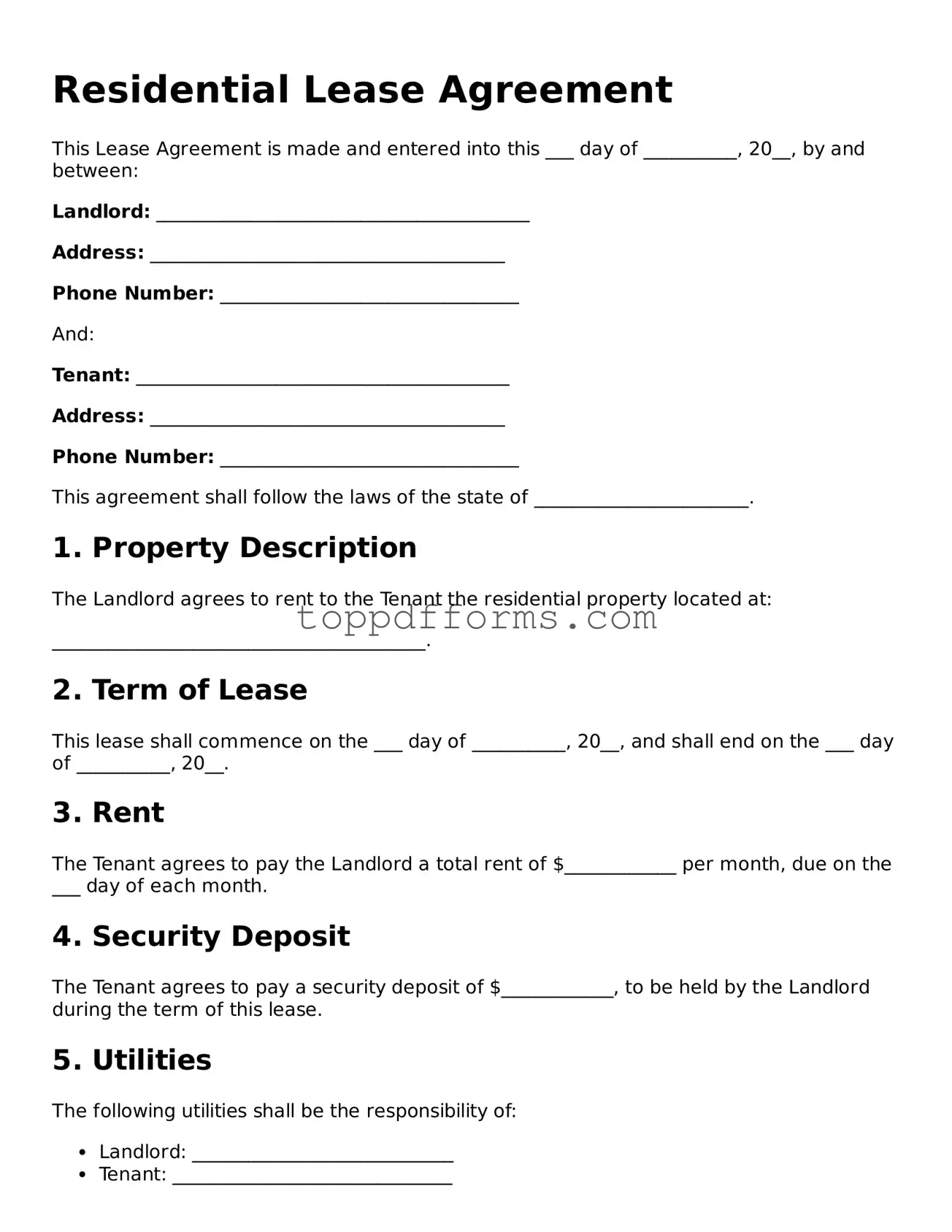What is a Lease Agreement?
A Lease Agreement is a legally binding contract between a landlord and a tenant. It outlines the terms under which a tenant can occupy a rental property. This document typically includes details such as the rental amount, duration of the lease, and responsibilities of both parties.
What should be included in a Lease Agreement?
Key components of a Lease Agreement include the names of the landlord and tenant, property address, lease term, rental payment details, security deposit information, and rules regarding maintenance and repairs. Additionally, it may address policies on pets, smoking, and subletting.
How long does a Lease Agreement last?
The duration of a Lease Agreement can vary. Common terms include month-to-month leases or fixed-term leases lasting six months, one year, or longer. The specific duration should be clearly stated in the agreement to avoid confusion.
Can a Lease Agreement be terminated early?
Yes, a Lease Agreement can be terminated early, but it typically requires mutual consent from both the landlord and tenant. Some agreements may include specific conditions under which early termination is allowed, such as job relocation or significant property issues.
What happens if a tenant does not pay rent?
If a tenant fails to pay rent, the landlord has the right to initiate eviction proceedings after following the proper legal process. The Lease Agreement usually outlines the steps that will be taken in case of non-payment, including any grace periods and late fees.
Is a verbal agreement sufficient for a lease?
While a verbal agreement may be legally binding in some situations, it is not advisable. A written Lease Agreement provides clear documentation of the terms and helps protect both parties' rights. It serves as a reference point in case of disputes.
What should I do if I have a dispute with my landlord or tenant?
In the event of a dispute, the first step is to communicate openly with the other party to attempt resolution. If that fails, reviewing the Lease Agreement for relevant terms can help clarify responsibilities. Mediation or legal action may be necessary if an agreement cannot be reached.
